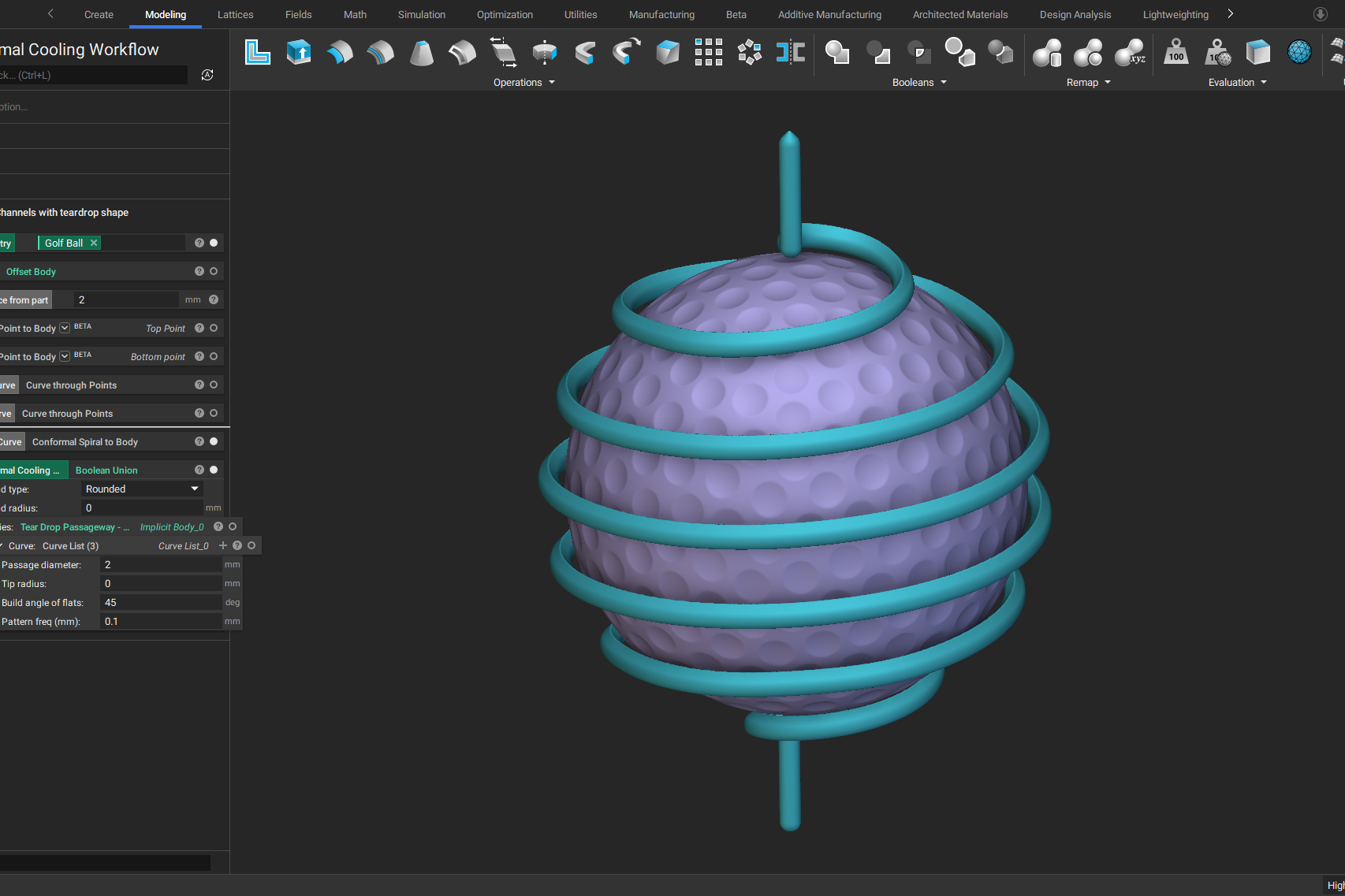Computational Modeling with nTop
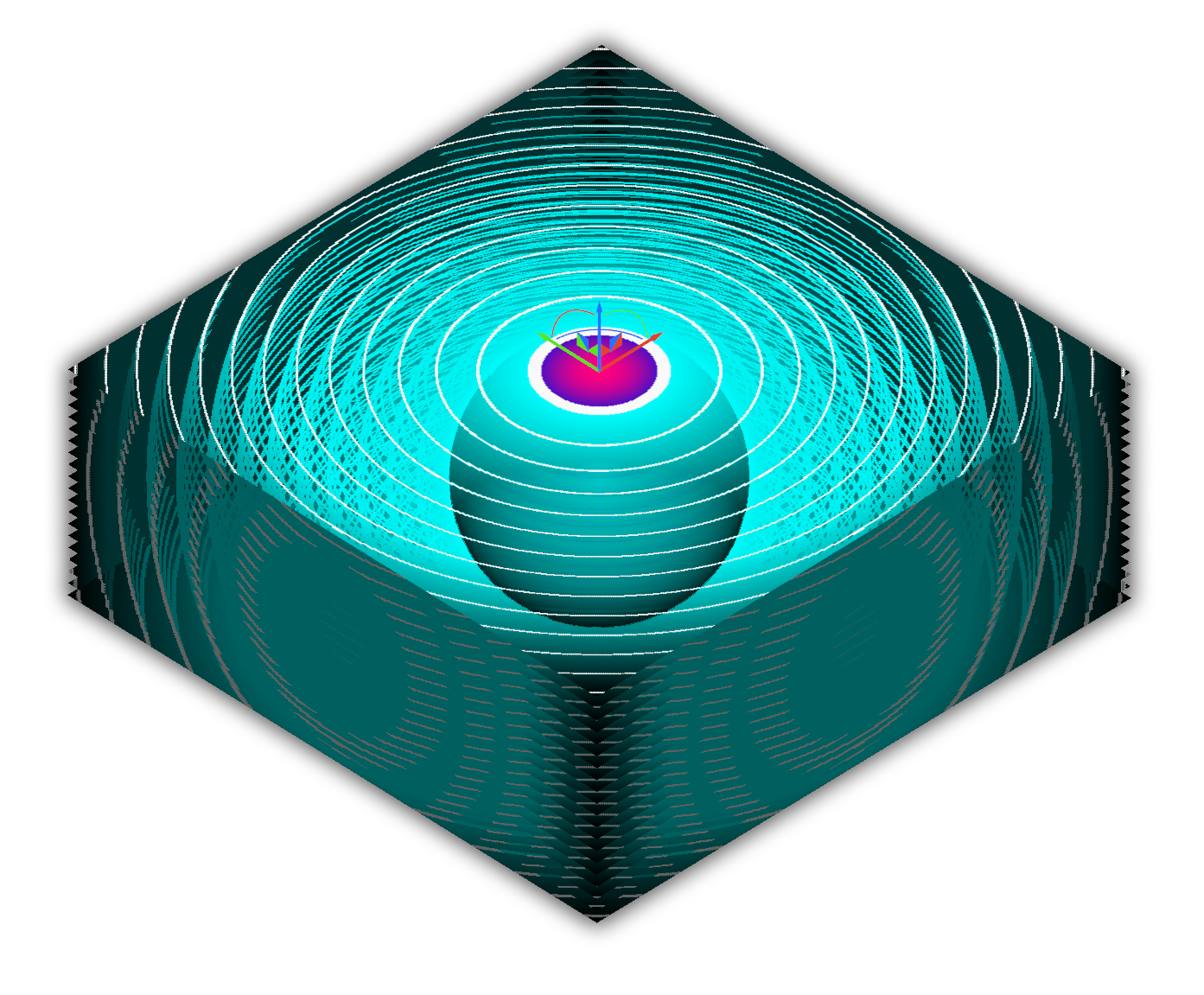
Written by nTop
Published on April 18, 2019
With nTop, we’ve combined 3D modeling, simulation, and manufacturing processes into one computational modeling environment managed through a custom visual programming interface. We’ve set out to enable our users to intelligently automate every aspect of the journey from modeling down to manufacturing. This ensures teams follow best practices, improves collaboration, and further paves the way for innovation.
Visual programming
Before joining nTop, I had developed a strong affinity for visual programming since it offered an interstitial realm between coding and modeling. Visual programming is one medium of computational modeling and it removes the immense complexities that come with the territory of software engineering while allowing you to engage with the underlying technology of CAD platforms in algorithmic ways. Tools like Grasshopper 3D by Mcneel and Autodesk Dynamo are great examples of visual programs that provide users the ability to build and morph geometry algorithmically. One key advantage of this type of programming is that it affords users the ability to automate and modularize complicated modeling tasks.
Although visual programs provide benefits for those desiring more automation than CAD tools allow, they have many limitations. They are general purpose, have complicated user-facing data-structures involving a steep learning curve, are only compatible and built for mesh and B-rep geometries, and lastly, require a thorough understanding of the topological structures of each. Not to mention that as mesh and B-rep geometries become larger and more complex, so does managing change. Users end up becoming entangled in managing the data-structures required to construct the topology of the meshes and BReps of their system, rather than focusing on their design goals.
A truly scalable computational modeling environment requires a robust, yet user-friendly visual programming interface that acts as a conduit to an equally powerful geometry kernel. nTop’s latest product, nTop Platform, is exactly this and more.
What is computational modeling?
Imagine a lattice with a constant thickness occupying a volume. Now imagine that same lattice, but with a variable thickness to accommodate externally applied forces. Now let’s change the volume, the lattice type, and the loads. In a traditional solid modeling sense, this would be a daunting and painful task to accomplish. Though, with computational modeling, it is as easy as changing a couple parameters once the logic is set. Computational modeling is the process of developing and deploying algorithms to automate and execute design, simulation, and manufacturing workflows. It is a means of achieving a solution space of results based on user prescribed relationships among geometry constraints, engineering data, and manufacturing requirements.
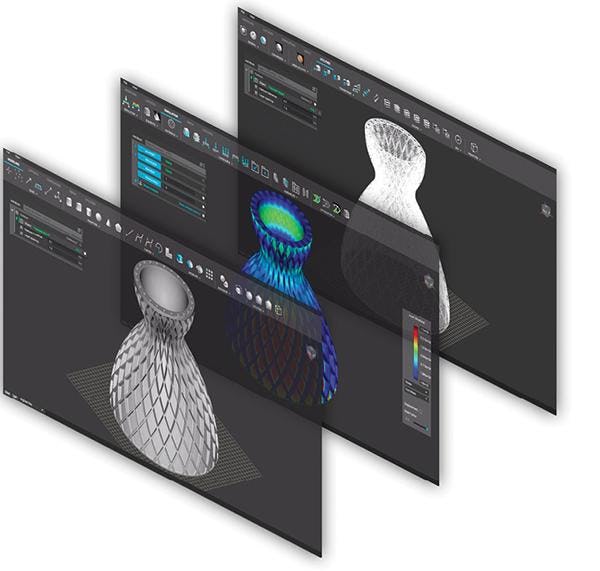
An example of an integrated environment with shape, engineering analysis and manufacturing toolpath outputs. Changes in an upstream parameter instantly result in updated manufacturing data.
With nTop Platform, we’ve combined modeling, simulation, and manufacturing processes into one computational modeling environment managed through a custom visual programming interface. We’ve set out to enable our users to intelligently automate every aspect of the journey from modeling down to manufacturing. This ensures teams follow best practices, improves collaboration, and further paves the way for innovation.
A new way of programming
Developing an algorithm may sound a bit challenging, but with nTop Platform we’ve developed a visual programming environment that is easy to use, devoid of complicated data-structures and augmented by the implicit modeling technology. With the block system inside nTop Platform, you are programming without learning a new language. Our visual program consists of a dictionary of blocks, each containing a discrete function with inputs and outputs (with outputs serving as new inputs), which aggregate to form what we call a Notebook.
At first glance, Notebooks may appear similar to the tree structure most commonly found in feature-based CAD programs, or as an alternative to canvas-based style parametric visual programming. Under the hood, Notebooks are essentially one large mathematical super-equation that output positive and negative values in all three dimensions. These values make up our “field” and the bounds of our geometry reside at the location of all the values that equal zero. Values internal to our geometry are negative and values external are positive. Values increase positively and decrease negatively as we move farther away from the bounds. These ever-present values are used to execute, without fail, modeling operations such as booleaning, offsetting, and filleting, due to the fact that implicits are not defined or constrained by topology. This process of defining geometry through mathematical equations is called Implicit Modeling and it is modeling in the purest sense.

Distance field information is stored in models and can be used for complex model edits such as booleaning, offsetting, and filleting.
With notebooks, you enhance your implicits through synthesizing simulation and manufacturing data to create Field-Driven Designs.
Let’s revisit the lattice example. With nTop Platform, users can populate a part to optimize with a lattice, run structural analysis simulations, and use the resulting simulation data to optimize and fine tune the lattice further in one connected environment. In this example, modifying the part or swapping the lattice structure for another, is just a matter of changing a couple of values in the Notebook.
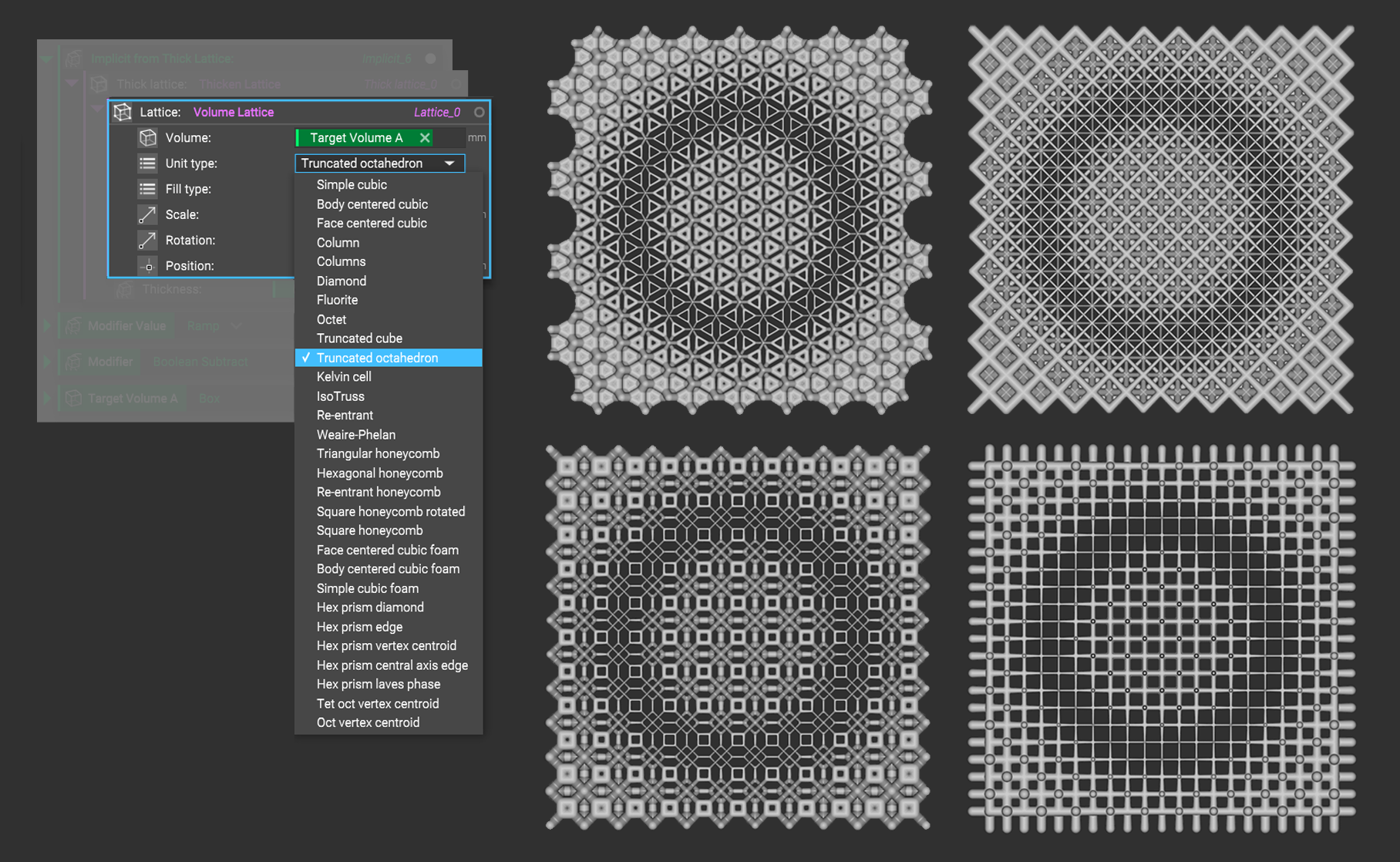
Four different lattice structures responding to a distance-based modifier via variable strut thickness, all derived from the same Notebook. This example demonstrates how users can make major changes to their design while simultaneously respecting the constraints.
The benefit is that this same Notebook can seamlessly be used across many different scenarios. It is a simple experience for the end user, and they need not learn a new syntax in the process.
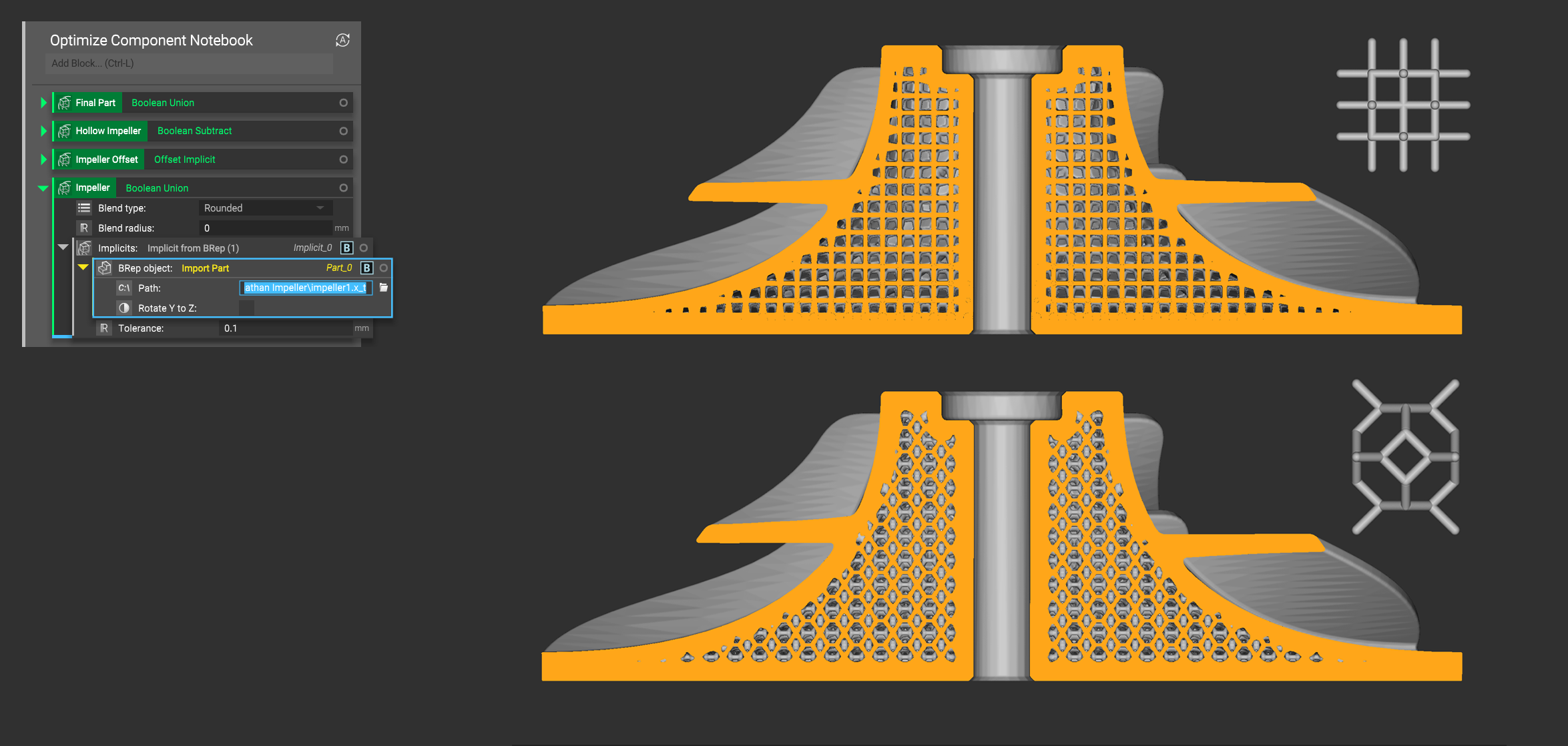
Using the same Notebook, seamlessly integrate and test various lattice structures for lightweighting and structural optimization. In this example, two different lattice structures are applied to the same impeller.
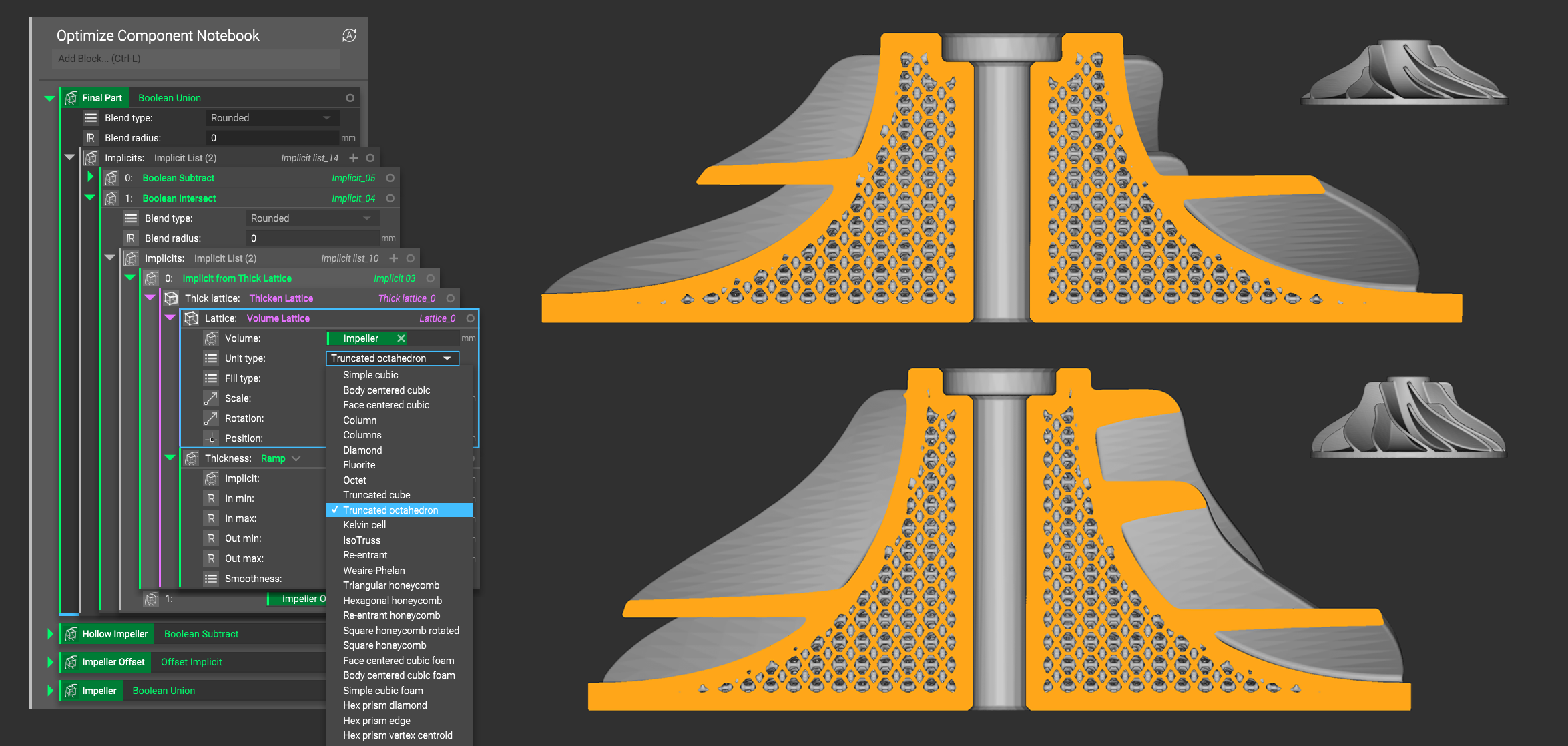
Using the same Notebook, effortlessly swap target components based on continually evolving part and manufacturing requirements. In this example, the same lattice structure is applied to two different impellers.
Our notebooks don’t just enable you to automate, capture, and modularize custom workflows. They allow you to do more than you ever could with traditional CAD, at a higher level of precision, at unprecedented speeds. Engaging with implicits and fields iteratively through user-defined algorithms is what makes nTop Platform the most powerful computational modeling environment yet.
Reap the rewards
Computational modeling is a bottom-up approach that is the most efficient, intelligent, and scalable means of solving the most challenging engineering problems. Using this type of approach that combines 3D modeling, simulation, and manufacturing processes in a single environment through computational modeling improves collaborations between teams and ensures that learned knowledge is preserved and passed along for future products.
As the demands of advanced manufacturing will continue to evolve, and product complexity increases, tools like notebooks found in nTop will accommodate these changes every step of the way. To learn more about our visual programming interface in nTop Platform, be sure to check us out at some upcoming events where we’ll be demoing exciting workflows and showcasing some radical manufactured parts:
- RAPID + TCT, Detroit MI, May 20-23, booth 953
- Space Tech Expo USA, Pasadena, CA, May 20-22, Booth 6014
nTop hopes to see you there!

nTop
nTop (formerly nTopology) was founded in 2015 with the belief that engineers’ ability to innovate shouldn’t be limited by their design software. Built on proprietary technologies that upend the constraints of traditional CAD software while integrating seamlessly into existing processes, nTop allows designers in every industry to create complex geometries, optimize instantaneously, and automate workflows to develop breakthrough 3D-printed parts in record time.
Related content
- VIDEO
Topology Optimization Design for Cast and Injection-Molded Parts
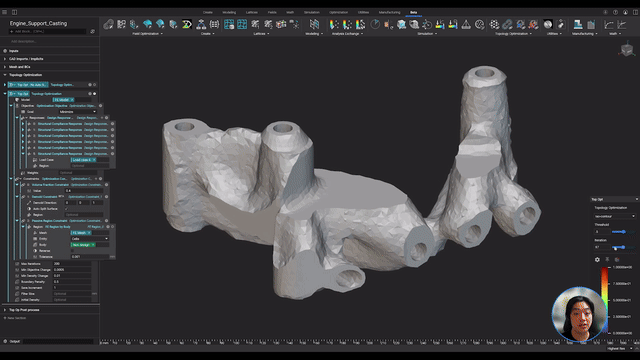
- VIDEO
Lightweighting an impeller for additive manufacturing
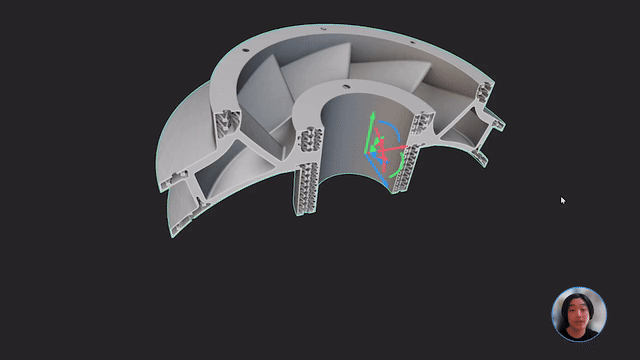
- GUIDE
Download: Advanced design software and additive manufacturing for personalized implants
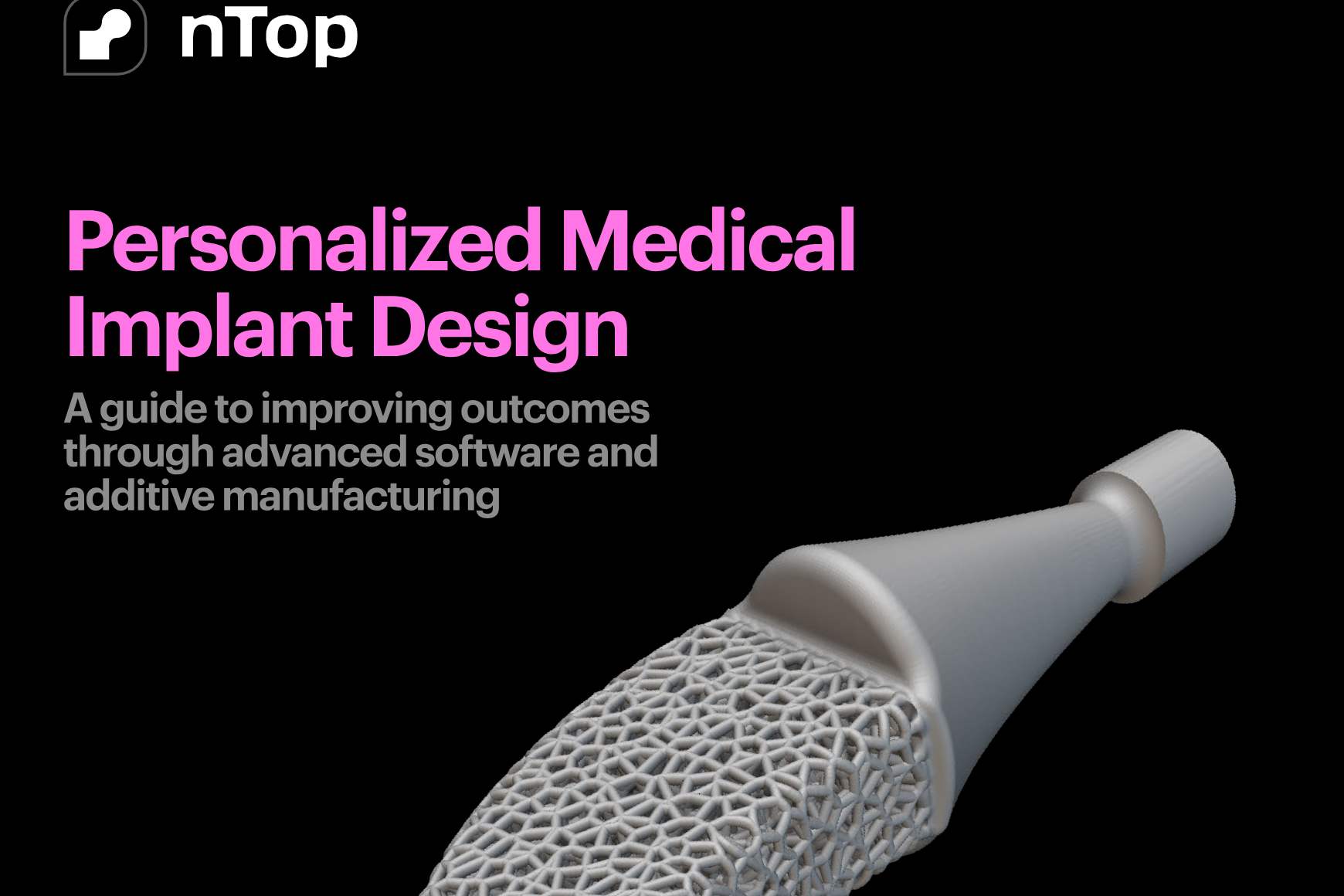
- VIDEO
Sneak peek into the nTop + Autodesk Fusion 360 integration
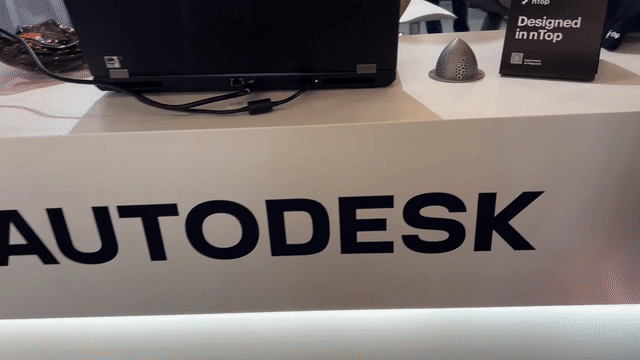
- ARTICLE
Optimizing thermal management with conformal cooling to extend operational life
